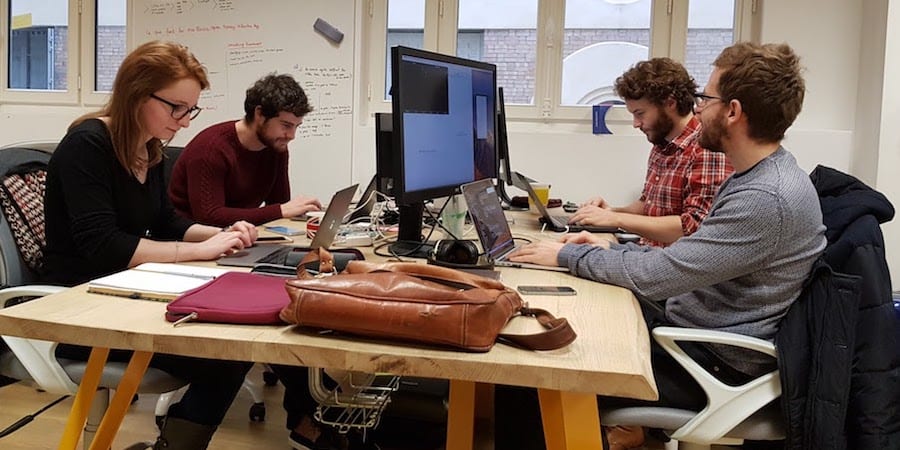
5 ways to improve your connection with the gemba
FEATURE – The author discusses the practices that can help us make the most of the traditional mantra “go see, ask why, and show respect”.
Words: Flávio Battaglia, Vice President, Lean Institute Brasil
As the place where value is created in an organization, the gemba is somewhat “sacred” for lean thinkers. The most important thing that can happen in a company happens at the gemba: with their work, people and machines transform materials and information into products and services for customers and society.
Our main problems lie in the gemba, too. It is where we can investigate the relationships between causes and symptoms and devise and experiment with countermeasures and solutions. It is at the gemba that the real learning about how we do the work takes place. It is at the gemba that leaders and mentors, inspired by the lean concept of respect for people, support the never-ending evolution and development of teams and the processes they run.
Finally, the gemba is where the main management levers can be found, the means by which we can improve performance and sustain results.
Covid-19 has come with new challenges: in today’s world, millions of people are working from home. The “digital gemba” seems to be here to stay, and learning to manage it has forced us to develop our skillset to a never-seen-before extent.
For these and many other reasons, it is critical we find ways to deeply connect with the gemba – be it virtual or physical.
It is up to leadership to carefully “design” the gemba experience, so that the interaction between management and front-line is fruitful and constructive. Indeed, a well-intentioned, but poorly structured trip to the gemba can do serious damage.
In this article, I’d like to share with you five management practices that allow us to take our interaction with the gemba to the next level.
- CALIBRATE MINDSETS
It is not just about going to gemba; it is about how we go to gemba. As managers, our mindset needs to be calibrated and aligned with the perspectives of our interlocutors.
A precondition for this is to be present, body and soul, to capture the real situation about the circumstances surrounding the work and understand what lies behind superficial interpretations or window-dressing that can divert attention from what happens with the work on a regular basis.
Being at the gemba gives us a chance to go on a deep dive and develop an understanding of an often-multifaceted reality. Only by doing this can we strengthen our analysis, using the scientific approach to problem solving (PDCA) to reach the most effective countermeasures we can, those that are capable of get rid of problems once and for all.
To achieve a critical view of the work, thus finding more advanced forms of organizations that lead to higher performance, means to learn to align assumptions and basic thinking not only among leaders, but also between leaders and front-line workers.
With well-calibrated mindsets, the “magic” of lean happens: open communication that supports continuous and collective learning about how to find and solve problems.
- DEFINE A PURPOSE AND PLAN INTERACTIONS
Successful gemba interactions between leaders and front line require preparation – much like a field requires work for the seeds we plant in it to germinate.
First, we need to make it clear to everyone what the purpose of the gemba interaction is. The first question you need to answer is, “Why are we doing this?”. Of course, we can go to gemba for different reasons, some of the most common being:
- Understand the nature of the work and how we are serving clients.
- Systematically improve the organization of the work.
- Assess the capabilities of the value creators.
- Check that our strategic vision is permeating the routines people follow.
- Understand how work of managers is organized.
- Identify opportunities to improve the work of managers.
A shared sense of purpose, which stems from our prep work for a gemba interaction, is the main enabler of communication.
- UNDERSTAND THE CONTEXT
Every process exists within a specific context, which will vary from organization to organization. Therefore, one cannot go to gemba without first understanding the context – or contexts – around it in depth.
In a company, there can be different contexts – say, in different areas and departments – and the nature of the work will change in each of them. When going to gemba, it is useful to have prior knowledge of the reality we are about to visit. In other words, you should know at least the basics of the work being carried out in the gemba you are visiting. (Leaders who are responsible for different areas or departments, each with their own context, need to be especially careful and understand the facets and specifics of each location.)
Going to gemba without such knowledge can generate distortions or misconceptions on the problems we face and, therefore, the solutions we come up with. When this happens, our efforts to make improvements are highly compromised.
Getting granular about the technicalities allows us to understand the real capabilities of the people doing the work and give them the support they need to improve.
- EVALUATE MANAGEMENT ROUTINES
The gemba reflects the type of management you engage in. A walk is, therefore, a great opportunity to delve into and assess the practices that “operationalize” our management.
In other words, it is necessary to understand how managerial routines are structured: what are the mechanisms, methods, and procedures used to make decisions and take action? How effective are they? Are they aligned with the lean culture we are pursuing or are they still tied to more “traditional” forms of management?
Observe yourself and the way you manage, to understand if you are communicating effectively and how you can improve your own work and management style.
- CHECK ADHERENCE TO THE PLAN
Going to gemba should also be an opportunity to assess how the plan is being executed, to see what people are doing and why they are doing it, to determine whether they are working according to the standard and know that the work is of the quality required.
We have to ask ourselves if people are putting their energy to good use, to do the right things, in the right way and at the appropriate time.
When they don’t, easy and quick ways of noticing abnormalities and seeking help must be in place. In other words, everyone needs to be able to answer questions like:
- How do you know if you are doing the work with the required quality?
- How do you know if your work is late?
- What do you do when you can't do your job as expected?
- What do you do when you identify a problem?
Clear and didactic methods to expose and solve problems must be established, as do procedures for documenting and disseminating the knowledge and experiences, so that they can be used elsewhere in the organization when the circumstances call for it.
These are some of the ways in which you can improve your gemba walks. There will be others, of course, depending on the specific needs of each organization. Like everything in lean, to perfect our approach towards the gemba and make the most of the three fundamental lean practices of “go see, ask ‘why’, show respect” requires daily practice.
Going to gemba with a clear purpose, a calibrated mindset, good planning, and respect for the context can make the difference.
THE AUTHOR

Read more


INTERVIEW – Learn how Lean Thinking helped GE Appliances improve performance, develop people, and build a resilient, customer-focused, and learning-driven organization.


WOMACK’S YOKOTEN – After a road trip from Boston to Philadelphia driving Toyota’s hydrogen fuel-cell Mirai, Jim reflects on lean and green and why the two are not necessarily the same.


BUILDING BRIDGES – In this new series, people from startup studio M33 discuss their relationship with lean thinking and how the methodology helps them in their daily work.


COLUMN – Digitalization is now on the agenda of executive teams and is encouraging organizations to review their business models. But how does IT fit into the picture? What is its role? How can lean help?

